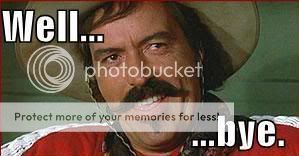The average consumer doesn't know this. They see the Beats name and associate it with high quality, again this is the average consumer. Audiophiles and phone savvy consumers know that Beats is just an EQ or that there are other higher quality lesser known brands out there.
Beats Audio is just an EQ. Its been shown that products with Beats built in tend to have a very flat normal EQ and then an EQ with the highs and lows boosted up quite a bit. They intentionally make the sound with beats turned off sound bad so theirs sounds better no matter what. Its just a gimmick and has been put in ROMs already since its just an EQ. No real big loss.
It's all about marketing. HTC failed here. I run into so many people who buy into the Beats hype and think they're getting good audio quality. Not to mention knowing that the over-the-ear sets are poorly designed and definitely prone to breaking. Regardless, people buy them and HTC had a marketable gimmick that they failed to capitalize on.
That said, who needs their horrid EQ? On-board mixing FTW!
The general consumer sees Beats as a high quality brand. What they don't know without researching is that there are lesser known brands and less expensive brands that have the same sound quality, and many better, than Beats. Beats is sought after because of marketing. Kids see their favorite artists supporting Beats and in turn they want to support it. Ask any audiophile, and I can almost guarantee you they think Beats is way overrated and highly overpriced.
Manufacturers of Audiophile equipment (receivers, tuners, amplifiers, pre-amplifiers, crossovers, speakers and all other form of Audiophile equipment), work tirelessly and spend enormous amounts of money and time and testing on R&D to reach a flat frequency response reproduction with as little distortion as attainable. The object is to reproduce the sound without any colorization from the equipment.
Truth is flat is how the engineers intended it to sound...flat is NORMAL, uncolored, pure. ANY DSP or "Beats" EQ is muddying up the sound. Injecting more bass, more treble is ARTIFICIAL and just totally distorting how it sounded to the ears of the engineer and the band. In other words, if the band and engineer had intended it to sound "Beats" then they'd have made it sound "Beats" and you wouldn't need "Beats" to sound that way. The moment I walk into a room and see the Bass and Treble of a stereo system turned up, I cringe. Overdriven Bass and Treble makes the sound horrible, difficult to listen to for long periods of time, and ruins the beauty and artistic value of the recording. Not every artist intended the Bass to be THUMPING, nor did they intend the Treble to be SHEARING. Subtle nuances of the recording are lost behind the distortion, entire tracks of audio become completely undetectable underneath all that mess.
As an audiophile I NEVER us ANY DSP or ANY artificial manipulation of the audio signal to produce anything other than the flat frequency response that was intended. My receiver (Denon AVR-3806...not even what I consider Audiophile, but cost $1,800 when I bought it in 2005), comes with a microphone and it produces frequency sweeps from each speaker, then does calculations around the room to determine acoustics and how they change the sound, then adjusts (equalizes) the sound to produce a flat frequency response across the entire spectrum and for the various listening positions around the room. My speakers (Klipsch KLF-20, KLF-C7, RW-35, RSW-15), are very low in distortion and to produce the sound with as little "color" as possible. They are designed to be efficient, so that you can drive them with low wattage, removing the need to turn up the amplifier into the ranges where distortion becomes a problem. 50% of movie theaters in the country use Klipsch for their speaker systems...there are reasons why.


